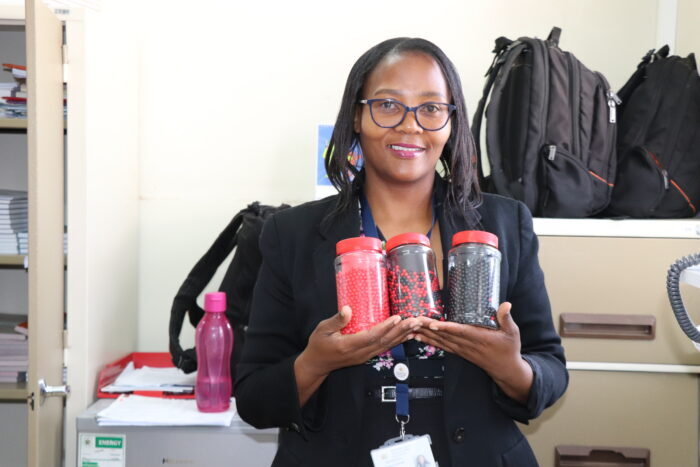How many lives can be saved by a machine the size of a toaster oven? Countless.
Today and every day, GeneXpert machines are helping to usher in an AIDS-free generation through early infant diagnosis. In mere minutes, these compact dynamos provide accurate test results that might have taken weeks or months in the past. In 2016, the Elizabeth Glaser Pediatric AIDS Foundation (EGPAF), through a Unitaid project, brought 29 GenXpert machines to high-volume sites in the mountainous nation of Lesotho, in southern Africa.

“Point-of-care early infant diagnosis (POC EID) has revolutionized prevention of mother-to-child transmission (PMTCT),” says Dr. Mpoi Thulo, EGPAF district technical advisor in Maseru, Lesotho. “We are now testing high-exposed infants [meaning that their mothers have a high HIV viral load] at birth while testing low-risk infants during their first six weeks, using POC EID machines.”’

The 29 GenXpert machines served a total of 160 facilities through a hub-and-spoke model that provided smaller sites with access to them.
When the project phased-out in June 2019, EGPAF transferred all the machines to the Lesotho Ministry of Health to ensure continuity of the benefits. Transitioning the machines to the Ministry, through the laboratory unit, includes a quality assurance component, according to Mafusi Mokone, EGPAF’s senior PMTCT and POC EID advisor. EGPAF continues to engage professional counselors to conduct the tests while procurement of health commodities and maintenance of the machines are taken care of by the Ministry of Health in collaboration with laboratory implementing partners.
Beyond testing HIV-exposed babies, EGPAF and the Ministry of Health are using the machines to test the viral loads of pregnant and breastfeeding women living with HIV. This helps ensure that they are adhering to antiretroviral treatment and reinforces the message that a low viral load reduces the risk of transmitting HIV to their babies.
Message in a Bottle

Simultaneously, health care workers educate the mothers using B-OK bottles, which demonstrate the effect of adherence to medication on the amount of virus in the body. A bottle filled entirely with red beads symbolizes a body with a high HIV viral load due to lack of treatment. A bottle filled entirely with black beads symbolizes a body with complete suppression of HIV as a result of adhering to treatment. And a bottle with a mix of red and black beads symbolizes someone who has started treatment, and a body is recovering.
“The [B-OK] tool helps health care workers convey the importance of treatment adherence and viral suppression in order to prevent further transmission of HIV to an unborn baby through pregnancy or during breastfeeding,” says Mapaseka Moteuli, an EGPAF counselor at the Maseru Seventh Day Adventist clinic.
Pregnant and breastfeeding mothers with high viral loads are closely monitored, and their viral load is tested every three months to ensure elimination of HIV transmission from mother to child. This also helps health workers know if they need to switch drugs for better viral suppression.
With the help of the small-but-mighty GenExpert machine, HIV-exposed infants are quickly and reliably diagnosed and mothers living with HIV are easily monitored for optimal results. Along with the ever-important interactions with health workers, Lesotho is steadily approaching the virtual elimination of mother-to-child HIV transmission. Mother-to-child HIV transmission in Lesotho now stands a 6.4%, and the gap is closing.




